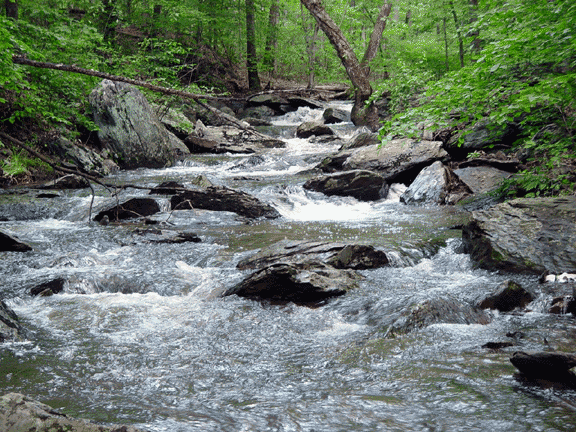WATER NEWS | By Kit Stolz
Fear of (wild) Water: Is it Necessary to Filter?
In February a brave writer in Slate published a column arguing that wild water is much over-feared, and that (with reasonable care) hikers in the mountains in places such as the Pacific Northwest need not reflexively filter or treat wild water taken from streams and lakes. To wit:
To be clear, there’s no question that Giardia lamblia, Cryptosporidium parvum, and various strains of fecal coliform bacteria—the waterborne pathogens responsible for giardiasis, cryptosporidiosis, and other diseases—can infect humans, with potentially serious health consequences. Yet research to date has failed to demonstrate any significant link between wilderness water consumption and infection with these threats. A 1993 study looking at the incidence of Giardia infection and gastrointestinal illness in backcountry travelers in a high-use area of California’s Sierra Nevada found only 5.7 percent tested positive, none of whom exhibited symptoms. Broader-scale approaches have similarly failed to justify concerns: Both a survey of health departments and a meta-analysis found that while giardiasis was prevalent enough to justify concern, there was no connection between recorded cases and drinking backcountry water.
In fact, it’s unclear that dangerous protozoans and bacteria occur in very many of North America’s wilderness streams and lakes at all—and where they are present, they are usually found far below levels that should concern humans. Though studies have confirmed thepresence of fecal coliform bacteria near sites with heavy human or pack animal traffic, they occurred only at a minority of sampled areas, and mostly at concentrations so low they were barely detectable. The data on Giardia and Cryptosporidium are similar: A study in the popular magazine Backpacker again only found pathogens in a minority of sampled sites, with the highest recorded concentration still so dilute that obtaining an infective dose would require consuming 7 liters of water in one sitting.
Author Ethan Linck goes on to argue, angering many commentators on the story at Slate, that white privilege has something to do with the incessant message that all water in the wilderness must be treated. More importantly, he points out that if a backpacker does get sick, it’s likely because he or she hasn’t been careful around his or her own wastes.
If the real danger comes from eating after a trip to the cathole, then that’s the point that should be emphasized—not an unsubstantiated view of all water in the mountains as suspect. In all likelihood, it’s not the water that’s gross. It’s you.
For this heresy, Linck is absolutely savaged in the comments. Commentators point out that these days filters (made by Sawyer for example) are readily available for a low-price. Thru-hikers attach them to water bottles and voila, safety at a low-price and light weight. As one emergency MD put it (more calmly than most):
There are very effective ways of treating water that are not expensive. For example, even something as readily available and inexpensive as household bleach can be used in the wilderness to kill giardia. In fact, for those who do wish to use a filter, there are filters available that cost well less than $100.
All true, and points well-taken. But despite this torrent of blame and abuse I admire Linck and the ever-contrarian Slate for pointing out that in fact many many hikers (most thru-hikers, in my experience) including moi do not filter water, and suffer no ill effects. It’s an illusion, to suppose that we live in a world safe from disease, but it’s also an illusion to suppose that we can make our world completely safe from disease.
To blame wilderness lovers for wanting to take wild water into their bodies like a wafer in a religious ceremony — perhaps it’s foolish, but aren’t all leaps of faith a bit foolish?


Leave A Comment